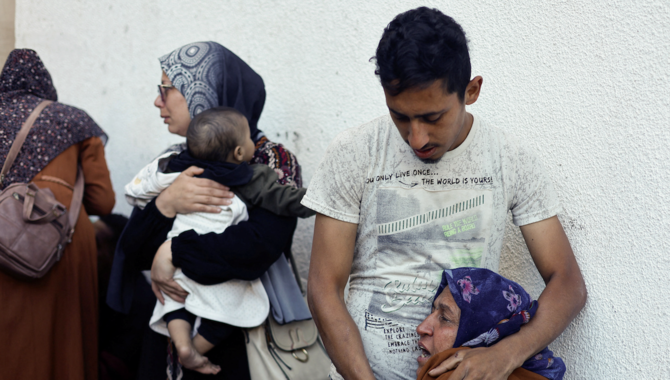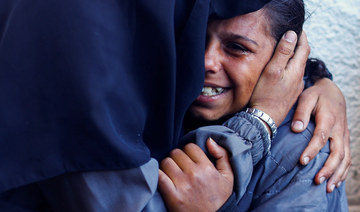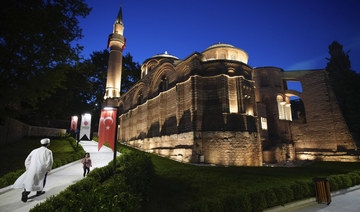CAIRO: Al-Azhar Al-Sharif, Islam’s highest seat of learning, and the Arab Parliament have condemned in the strongest terms Israel’s actions in Rafah city in the Gaza Strip.
Israel on Tuesday sent tanks into Rafah in southern Gaza, seizing control of the border crossing with Egypt, an operation the UN said denied it access to the key humanitarian passage.
Al-Azhar said in a statement that the storming of the Rafah crossing by the tanks of the “terrorist Zionist entity” was an attempt to invade the entire Palestinian city of Rafah, tighten the siege on the Gaza Strip, and completely isolate it by shutting its last outlet to the outside world.
It called the Israeli action “a full-fledged war crime committed in full view of the entire world” and an addition to the series of “brutal crimes being committed by the occupying entity for more than 200 consecutive days.”
Al-Azhar said these “inhumane criminal attempts come within a series of recent escalations by the terrorist Zionist entity in the city of Rafah, which is the last refuge for Palestinian civilians.”
The institution said that this “portends the commission of new massacres and the fall of more innocent martyrs, in light of international silence and unprecedented impotence, which cannot be explained or justified.”
Al-Azhar said: “Our world is governed by a double standard and laws of the jungle, with the strong preying on the weak.”
It called on the international community, concerned international organizations, and all active parties to live up to their responsibilities in the face of the brutal massacres committed by the “Zionist entity” against Palestinians in Gaza, to intervene immediately to stop these “daily crimes” and to “make every effort to lift the siege on the strip completely and stop the Zionist plans.”
These plans, Al-Azhar said, aim at unscrupulously suffocating, starving and imprisoning 2 million innocent civilians, including women, children, the elderly, and the sick.
By capturing the Rafah crossing, Israel gained full control over the entry and exit of people and goods for the first time since it withdrew soldiers and settlers from Gaza in 2005, although it has long maintained a blockade of the coastal enclave in cooperation with Egypt.
The Arab Parliament, meanwhile, called Israel’s move “a dangerous escalation that undermines the efforts made to reach a ceasefire and spare the blood of Palestinian civilians who have been subjected to an unprecedented humanitarian catastrophe since the start of the brutal aggression against the Gaza Strip.”
It called the Israeli incursion “a death sentence for the wounded and sick in light of the collapse of the health system in the Gaza Strip.”
The Arab Parliament stressed that the developments taking place in the occupied Palestinian territories, including Rafah, and Israel’s intention to thwart efforts to reach a ceasefire are a clear embodiment of the “law of the jungle.”
It is, the organization said, a “blatant violation of all international norms, laws, and resolutions, which will lead the world into a dark tunnel and portend a new catastrophe that will end the remaining relief attempts and lead to complete genocide and forced displacement of millions of Palestinians.”
The Arab Parliament called on the international community, free countries, the UN Security Council, and the US administration to put more pressure than ever on the occupying entity to avoid further escalation and to force it to reach a sustainable truce and an immediate and permanent ceasefire.
The group praised the decision of the Bahamas to recognize the state of Palestine, stressing that it is “a new victory for the Palestinian cause and Palestinian diplomacy, especially since it comes at a time when the occupying entity’s plans to liquidate the Palestinian cause are exposed.”



























